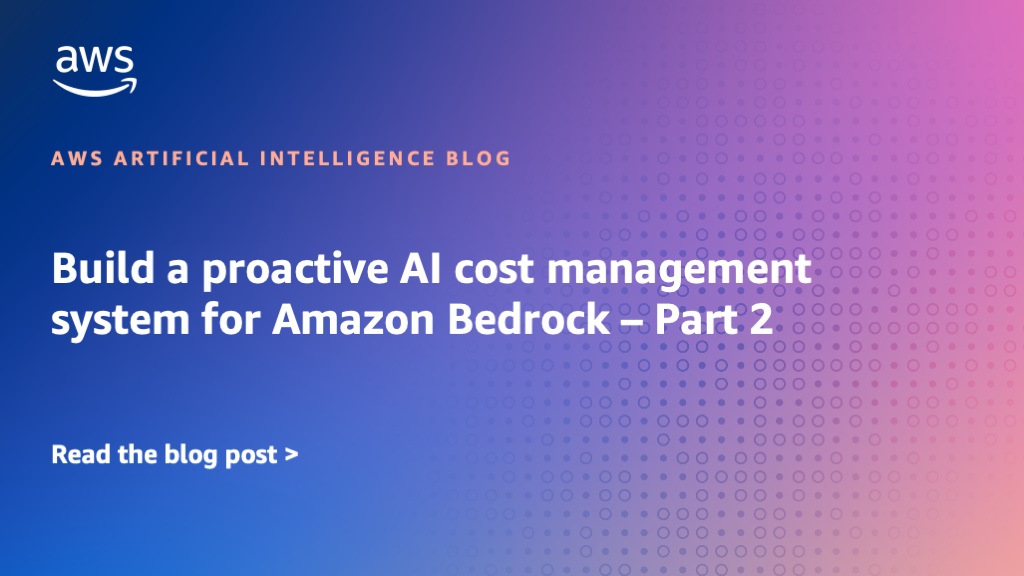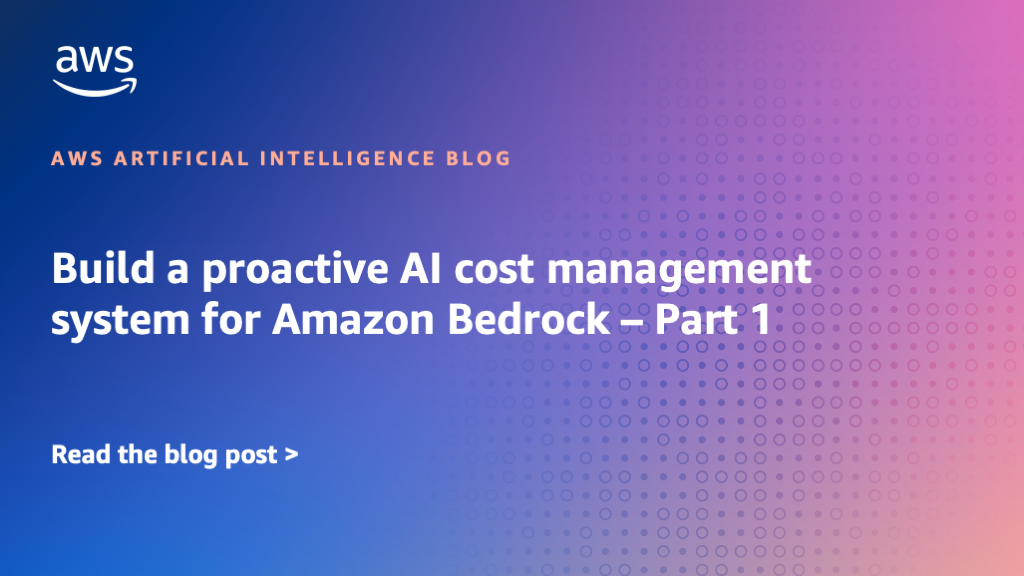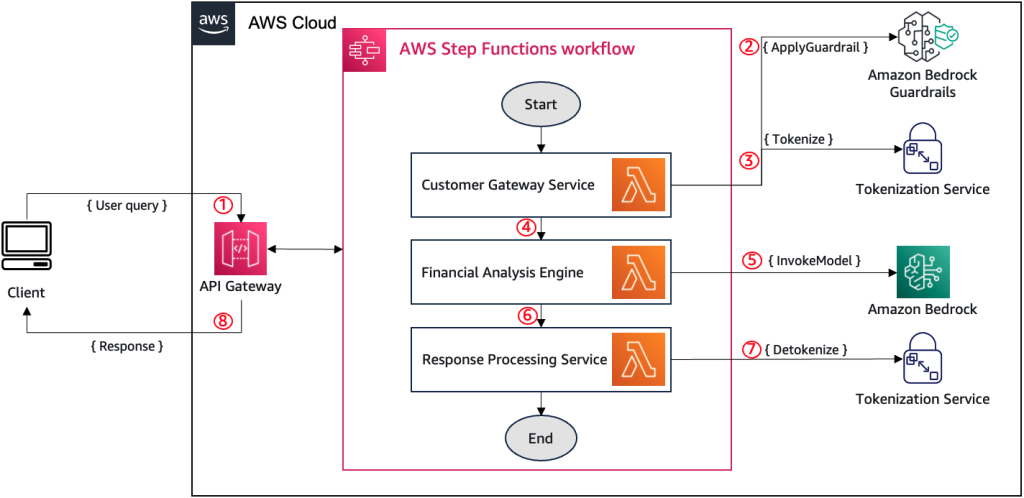Artificial Intelligence
Category: Application Services
Build a proactive AI cost management system for Amazon Bedrock – Part 2
In this post, we explore advanced cost monitoring strategies for Amazon Bedrock deployments, introducing granular custom tagging approaches for precise cost allocation and comprehensive reporting mechanisms that build upon the proactive cost management foundation established in Part 1. The solution demonstrates how to implement invocation-level tagging, application inference profiles, and integration with AWS Cost Explorer to create a complete 360-degree view of generative AI usage and expenses.
Build a proactive AI cost management system for Amazon Bedrock – Part 1
In this post, we introduce a comprehensive solution for proactively managing Amazon Bedrock inference costs through a cost sentry mechanism designed to establish and enforce token usage limits, providing organizations with a robust framework for controlling generative AI expenses. The solution uses serverless workflows and native Amazon Bedrock integration to deliver a predictable, cost-effective approach that aligns with organizational financial constraints while preventing runaway costs through leading indicators and real-time budget enforcement.
Integrate tokenization with Amazon Bedrock Guardrails for secure data handling
In this post, we show you how to integrate Amazon Bedrock Guardrails with third-party tokenization services to protect sensitive data while maintaining data reversibility. By combining these technologies, organizations can implement stronger privacy controls while preserving the functionality of their generative AI applications and related systems.
Whiteboard to cloud in minutes using Amazon Q, Amazon Bedrock Data Automation, and Model Context Protocol
We’re excited to share the Amazon Bedrock Data Automation Model Context Protocol (MCP) server, for seamless integration between Amazon Q and your enterprise data. In this post, you will learn how to use the Amazon Bedrock Data Automation MCP server to securely integrate with AWS Services, use Bedrock Data Automation operations as callable MCP tools, and build a conversational development experience with Amazon Q.
Automate the creation of handout notes using Amazon Bedrock Data Automation
In this post, we show how you can build an automated, serverless solution to transform webinar recordings into comprehensive handouts using Amazon Bedrock Data Automation for video analysis. We walk you through the implementation of Amazon Bedrock Data Automation to transcribe and detect slide changes, as well as the use of Amazon Bedrock foundation models (FMs) for transcription refinement, combined with custom AWS Lambda functions orchestrated by AWS Step Functions.
Accelerating data science innovation: How Bayer Crop Science used AWS AI/ML services to build their next-generation MLOps service
In this post, we show how Bayer Crop Science manages large-scale data science operations by training models for their data analytics needs and maintaining high-quality code documentation to support developers. Through these solutions, Bayer Crop Science projects up to a 70% reduction in developer onboarding time and up to a 30% improvement in developer productivity.
Build a serverless audio summarization solution with Amazon Bedrock and Whisper
In this post, we demonstrate how to use the Open AI Whisper foundation model (FM) Whisper Large V3 Turbo, available in Amazon Bedrock Marketplace, which offers access to over 140 models through a dedicated offering, to produce near real-time transcription. These transcriptions are then processed by Amazon Bedrock for summarization and redaction of sensitive information.
A generative AI prototype with Amazon Bedrock transforms life sciences and the genome analysis process
This post explores deploying a text-to-SQL pipeline using generative AI models and Amazon Bedrock to ask natural language questions to a genomics database. We demonstrate how to implement an AI assistant web interface with AWS Amplify and explain the prompt engineering strategies adopted to generate the SQL queries. Finally, we present instructions to deploy the service in your own AWS account.
Integrate Amazon Bedrock Agents with Slack
In this post, we present a solution to incorporate Amazon Bedrock Agents in your Slack workspace. We guide you through configuring a Slack workspace, deploying integration components in Amazon Web Services, and using this solution.
WordFinder app: Harnessing generative AI on AWS for aphasia communication
In this post, we showcase how Dr. Kori Ramajoo, Dr. Sonia Brownsett, Prof. David Copland, from QARC, and Scott Harding, a person living with aphasia, used AWS services to develop WordFinder, a mobile, cloud-based solution that helps individuals with aphasia increase their independence through the use of AWS generative AI technology.









